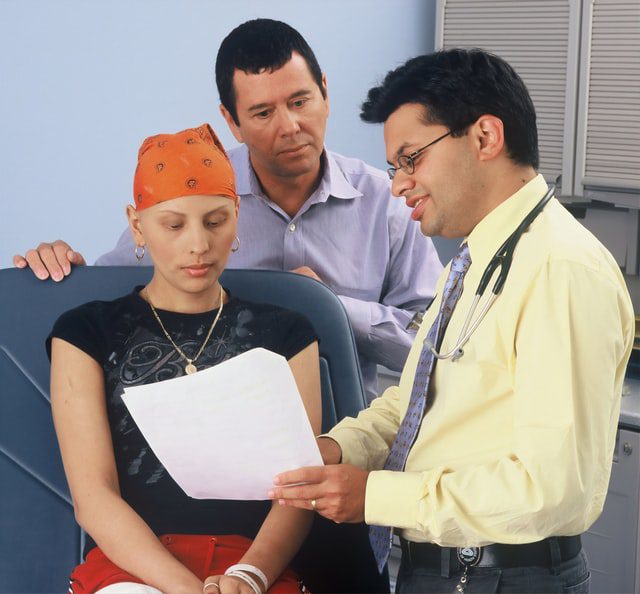Overview Of Radiation Sickness
Radiation sickness is illness and symptoms resulting from excessive exposure to ionizing radiation.
There are two main types of radiation: non-ionizing and ionizing.
- Nonionizing radiation comes in the form of light, radio waves, microwaves, and radar. These forms usually don’t cause tissue damage.
- Ionizing radiation causes immediate effects on human tissue. X-rays, gamma rays, and particle bombardment (neutron beam, electron beam, protons, mesons, and others) give off ionizing radiation. This type of radiation is used for medical testing and treatment. It is also used in industrial and manufacturing purposes, weapons and weapons development, and more.
Commonly Associated With
Radiation poisoning; Radiation injury; Rad poisoning
Considerations
Radiation sickness results when humans (or other animals) are exposed to very large doses of ionizing radiation.
Radiation exposure can occur as a single large exposure (acute). Or it can occur as a series of small exposures spread over time (chronic). Exposure may be accidental or intentional (as in radiation therapy for disease treatment).
Radiation sickness is generally associated with acute exposure and has a characteristic set of symptoms that appear in an orderly fashion. Chronic exposure is usually associated with delayed medical problems such as cancer and premature aging, which may happen over a long period of time.
The risk for cancer depends on the dose and begins to build up, even with very low doses. There is no “minimum threshold.”
Exposure from x-rays or gamma rays is measured in units of roentgens. For example:
- Total body exposure of 100 roentgens/rad or 1 Gray unit (Gy) causes radiation sickness.
- Total body exposure of 400 roentgens/rad (or 4 Gy) causes radiation sickness and death in half of the individuals who are exposed. Without medical treatment, nearly everyone who receives more than this amount of radiation will die within 30 days.
- 100,000 roentgens/rad (1,000 Gy) causes almost immediate unconsciousness and death within an hour.
The severity of symptoms and illness (acute radiation sickness) depends on the type and amount of radiation, how long you were exposed, and which part of the body was exposed. Symptoms of radiation sickness may occur right after exposure, or over the next few days, weeks, or months. Bone marrow and the gastrointestinal tract are especially sensitive to radiation injury. Children and babies still in the womb are more likely to be severely injured by radiation.
Because it is difficult to determine the amount of radiation exposure from nuclear accidents, the best signs of the severity of the exposure are the length of time between the exposure and the onset of symptoms, the severity of symptoms, and severity of changes in white blood cells. If a person vomits less than an hour after being exposed, that usually means the radiation dose received is very high and death may be expected.
Children who receive radiation treatments or who are accidentally exposed to radiation will be treated based on their symptoms and their blood cell counts. Frequent blood studies are necessary and require a small puncture through the skin into a vein to obtain blood samples.
Causes Of Radiation Sickness
Causes include:
- Accidental exposure to high doses of radiation, such as radiation from a nuclear power plant accident.
- Exposure to excessive radiation for medical treatments.
Symptoms
Symptoms of radiation sickness may include:
- Weakness, fatigue, fainting, confusion
- Bleeding from the nose, mouth, gums, and rectum
- Bruising, skin burns, open sores on the skin, sloughing of skin
- Dehydration
- Diarrhea, bloody stool
- Fever
- Hair loss
- Inflammation of exposed areas (redness, tenderness, swelling, bleeding)
- Nausea and vomiting, including vomiting of blood
- Ulcers (sores) in the mouth, esophagus (food pipe), stomach, or intestines
Your health care provider will advise you on how best to treat these symptoms of radiation sickness. Medicines may be prescribed to help reduce nausea, vomiting, and pain. Blood transfusions may be given for anemia (low counts of healthy red blood cells). Antibiotics are used to prevent or fight infections.
First Aid
Giving first aid to radiation victims may expose rescue personnel to radiation unless they are properly protected. Victims must be decontaminated so that they do not cause radiation sickness or injury to others.
- Check the person’s breathing and pulse.
- Start CPR, if necessary.
- Remove the person’s clothing and place the items in a sealed container. This stops ongoing contamination.
- Vigorously wash the victim with soap and water.
- Dry the victim and wrap with a soft, clean blanket.
- Call for emergency medical help or take the person to the nearest emergency medical facility if you can do so safely.
- Report the exposure to emergency officials.
If symptoms occur during or after medical radiation sickness treatment:
- Tell the provider or seek medical treatment right away.
- Handle affected areas gently.
- Treat symptoms or illnesses as recommended by the provider.
DO NOT
- DO NOT remain in the area where exposure occurred.
- DO NOT apply ointments to burned areas.
- DO NOT remain in contaminated clothing.
- DO NOT hesitate to seek emergency medical treatment.
Prevention Of Radiation Sickness
Preventive measures include:
- Avoid unnecessary exposure to radiation, including unnecessary CT scans and x-rays.
- People working in radiation hazard areas should wear badges to measure their exposure level.
- Protective shields should always be placed over the parts of the body not being treated or studied during x-ray imaging tests or radiation therapy.



